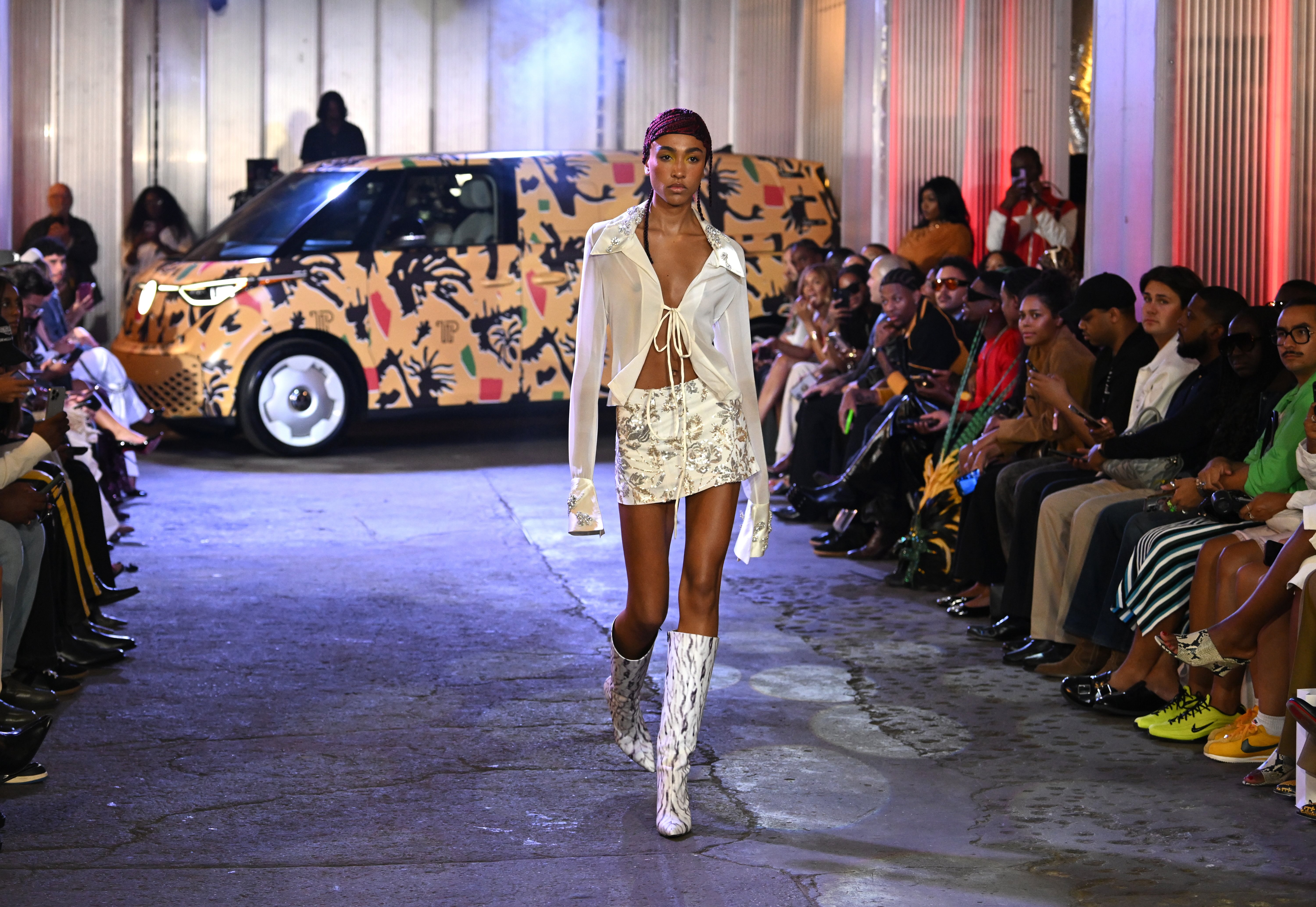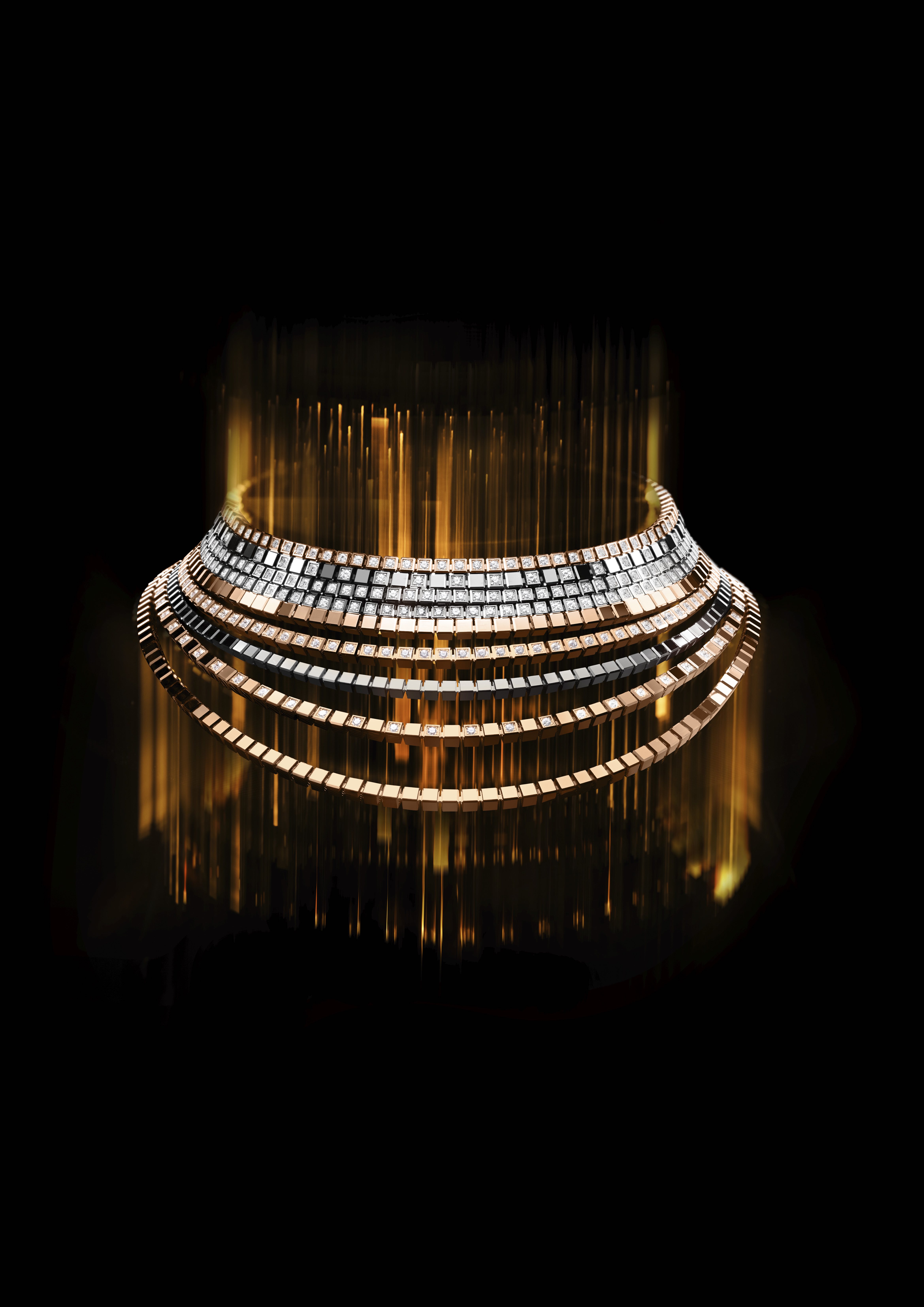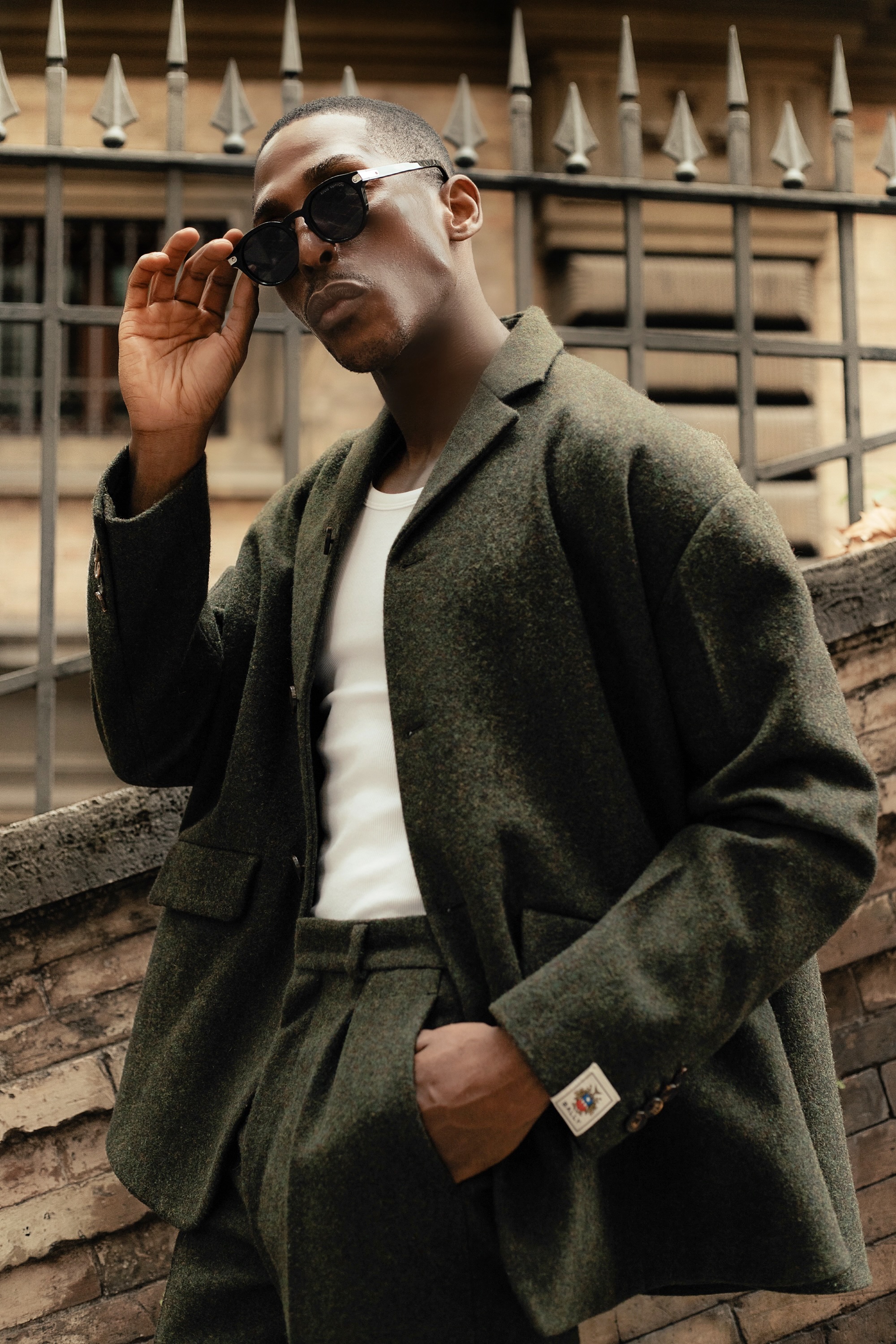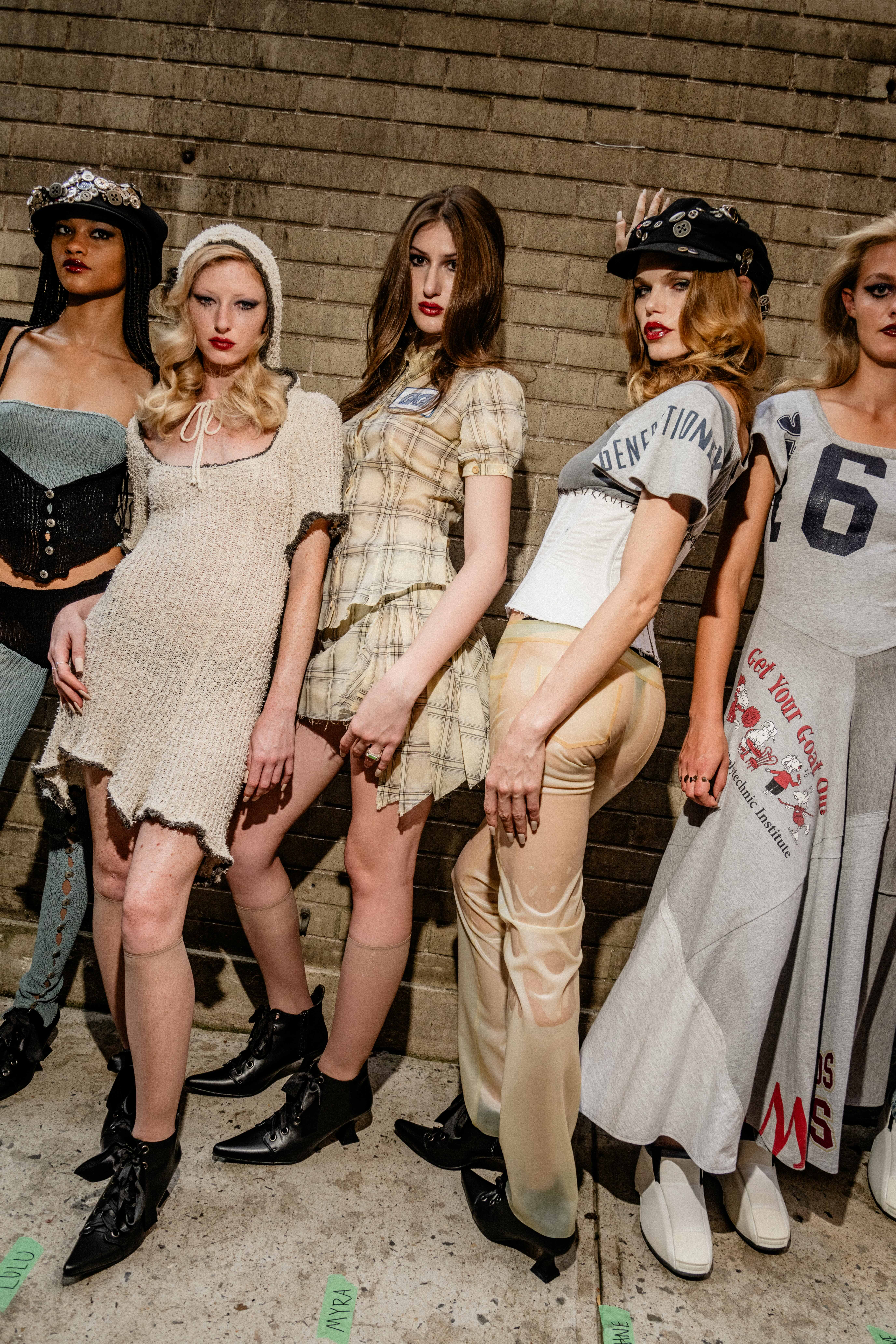

“Freja,” (2014). Aquarelle and ink. 29.7 x 42 centimeters. Courtesy the Artist.


“Frida,” (2012). Aquarelle and ink. 29.7 x 42 centimeters. Courtesy the Artist.


“Perfume Editorial for _Instyle_,“ 2014. Aquarelle and ink. 29.7 x 42 centimeters. Courtesy the Artist and _InStyle_.


“Vilken,” (2014). Aquarelle and ink. 48 x 35.3 centimeters. Courtesy the artist.
[](https://flaunt-mag.squarespace.com/config/pages/587fe9d4d2b857e5d49ca782#)[](https://flaunt-mag.squarespace.com/config/pages/587fe9d4d2b857e5d49ca782#)
Hanna Müller
No Such Thing As Static Happiness
Some indigenous peoples renounce imagery of the dead because they know that to see the dead portrayed is to summon and agitate their immortal spirit—to revive and reawaken them through memory.
Swedish illustrator Hanna Müller’s work is an imprint of an imprint. An abstraction from a photographic form that is itself abstracted from some fleeting moment of existence. Photography adds layers of confection and opacity to the rawer human experience of these moments. Müller’s work (which has exhibited at Fashion Space Gallery at London College of Fashion, appeared in collaboration with BOSS Orange, and in publications such as _Madame Figaro_) is an extraction of that replica: The essential lines of shape remain; the jawbone, the ridge of the nose, the hair, the makeup, the fashion—all achieved with incredibly succinct and precise detail. But it is the idealized—the fabulous—which retains the deepest imprint.
_This is the Nine Lives Issue. Do you feel you've lived multiple lives? How so?_ Not in a spiritual sense, no. But I think it is extraordinary to imagine where all the physical parts that I am have been. Where in the universe they were created, which forms they've been part of before they became a part of me, and where they will be in the future.
_What attracts you to femininity as subject matter?_ The softness. When it comes to creating images I've always been drawn to women’s long and soft lines.
_What do you think is crucial in imparting sensuality in your illustrations?_ I never intentionally aim for sensuality when I paint. I find inspiration in a serious and earnest state of mind, to which sensuality is closely connected. I guess that is what is reflected in my illustrations.
_What is challenging about the fashion space when it comes to representation or interpretation in your artwork?_ I don't think it is challenging. It's actually quite a simple process—I paint what I am aesthetically drawn to and then it becomes a simple process to implement fashion in my illustrations.
_What to you defines loss?_ Loss, to me, is closely related to human relationships and I rarely feel sorrow over material objects. But when someone I love disappears from my life I feel such strong grief, to a point where it almost appears as physical pain.
 
“Freja,” (2014). Aquarelle and ink. 29.7 x 42 centimeters. Courtesy the Artist.

“Freja,” (2014). Aquarelle and ink. 29.7 x 42 centimeters. Courtesy the Artist.
 
“Frida,” (2012). Aquarelle and ink. 29.7 x 42 centimeters. Courtesy the Artist.

“Frida,” (2012). Aquarelle and ink. 29.7 x 42 centimeters. Courtesy the Artist.
 
“Perfume Editorial for _Instyle_,“ 2014. Aquarelle and ink. 29.7 x 42 centimeters. Courtesy the Artist and _InStyle_.

“Perfume Editorial for _Instyle_,“ 2014. Aquarelle and ink. 29.7 x 42 centimeters. Courtesy the Artist and _InStyle_.
 
“Vilken,” (2014). Aquarelle and ink. 48 x 35.3 centimeters. Courtesy the artist.
[](https://flaunt-mag.squarespace.com/config/pages/587fe9d4d2b857e5d49ca782#)[](https://flaunt-mag.squarespace.com/config/pages/587fe9d4d2b857e5d49ca782#)
Hanna Müller
No Such Thing As Static Happiness
Some indigenous peoples renounce imagery of the dead because they know that to see the dead portrayed is to summon and agitate their immortal spirit—to revive and reawaken them through memory.
Swedish illustrator Hanna Müller’s work is an imprint of an imprint. An abstraction from a photographic form that is itself abstracted from some fleeting moment of existence. Photography adds layers of confection and opacity to the rawer human experience of these moments. Müller’s work (which has exhibited at Fashion Space Gallery at London College of Fashion, appeared in collaboration with BOSS Orange, and in publications such as _Madame Figaro_) is an extraction of that replica: The essential lines of shape remain; the jawbone, the ridge of the nose, the hair, the makeup, the fashion—all achieved with incredibly succinct and precise detail. But it is the idealized—the fabulous—which retains the deepest imprint.
_This is the Nine Lives Issue. Do you feel you've lived multiple lives? How so?_ Not in a spiritual sense, no. But I think it is extraordinary to imagine where all the physical parts that I am have been. Where in the universe they were created, which forms they've been part of before they became a part of me, and where they will be in the future.
_What attracts you to femininity as subject matter?_ The softness. When it comes to creating images I've always been drawn to women’s long and soft lines.
_What do you think is crucial in imparting sensuality in your illustrations?_ I never intentionally aim for sensuality when I paint. I find inspiration in a serious and earnest state of mind, to which sensuality is closely connected. I guess that is what is reflected in my illustrations.
_What is challenging about the fashion space when it comes to representation or interpretation in your artwork?_ I don't think it is challenging. It's actually quite a simple process—I paint what I am aesthetically drawn to and then it becomes a simple process to implement fashion in my illustrations.
_What to you defines loss?_ Loss, to me, is closely related to human relationships and I rarely feel sorrow over material objects. But when someone I love disappears from my life I feel such strong grief, to a point where it almost appears as physical pain.

“Vilken,” (2014). Aquarelle and ink. 48 x 35.3 centimeters. Courtesy the artist.
[](https://flaunt-mag.squarespace.com/config/pages/587fe9d4d2b857e5d49ca782#)[](https://flaunt-mag.squarespace.com/config/pages/587fe9d4d2b857e5d49ca782#)
Hanna Müller
No Such Thing As Static Happiness
Some indigenous peoples renounce imagery of the dead because they know that to see the dead portrayed is to summon and agitate their immortal spirit—to revive and reawaken them through memory.
Swedish illustrator Hanna Müller’s work is an imprint of an imprint. An abstraction from a photographic form that is itself abstracted from some fleeting moment of existence. Photography adds layers of confection and opacity to the rawer human experience of these moments. Müller’s work (which has exhibited at Fashion Space Gallery at London College of Fashion, appeared in collaboration with BOSS Orange, and in publications such as _Madame Figaro_) is an extraction of that replica: The essential lines of shape remain; the jawbone, the ridge of the nose, the hair, the makeup, the fashion—all achieved with incredibly succinct and precise detail. But it is the idealized—the fabulous—which retains the deepest imprint.
_This is the Nine Lives Issue. Do you feel you've lived multiple lives? How so?_ Not in a spiritual sense, no. But I think it is extraordinary to imagine where all the physical parts that I am have been. Where in the universe they were created, which forms they've been part of before they became a part of me, and where they will be in the future.
_What attracts you to femininity as subject matter?_ The softness. When it comes to creating images I've always been drawn to women’s long and soft lines.
_What do you think is crucial in imparting sensuality in your illustrations?_ I never intentionally aim for sensuality when I paint. I find inspiration in a serious and earnest state of mind, to which sensuality is closely connected. I guess that is what is reflected in my illustrations.
_What is challenging about the fashion space when it comes to representation or interpretation in your artwork?_ I don't think it is challenging. It's actually quite a simple process—I paint what I am aesthetically drawn to and then it becomes a simple process to implement fashion in my illustrations.
_What to you defines loss?_ Loss, to me, is closely related to human relationships and I rarely feel sorrow over material objects. But when someone I love disappears from my life I feel such strong grief, to a point where it almost appears as physical pain.


















